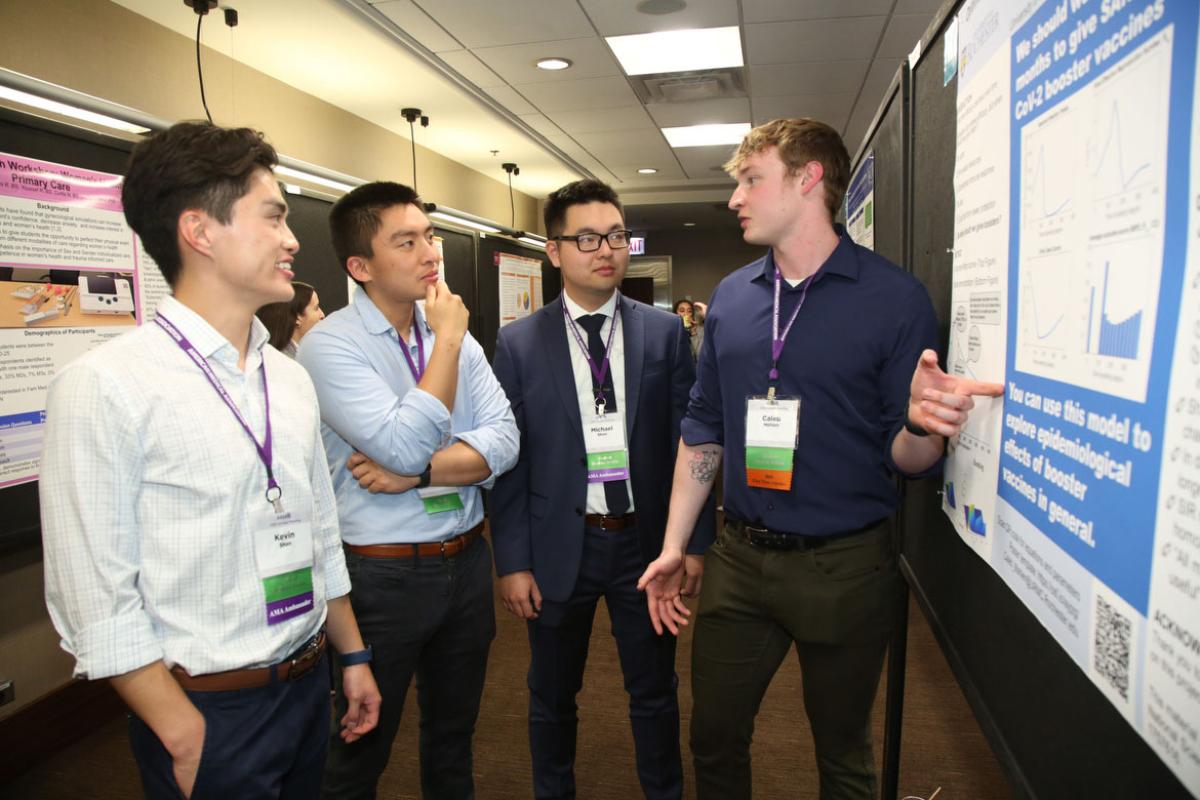If you’re preparing for the United States Medical Licensing Examination® (USMLE®) Step 1 exam, you might want to know which questions are most often missed by test-prep takers. Check out this example from Kaplan Medical, and read an expert explanation of the answer. Also check out all posts in this series.
A 34-year-old man comes to the physician’s office because of a one-month history of sudden, involuntary, intermittent jerking movements of both arms. The patient has no prior medical history. He is adopted and does not know his family history. His temperature is 36.9°C (98.4°F), pulse is 80 beats a minute, respirations are 20 breaths per minute, and blood pressure is 127/82 mm Hg.
Physical examination shows sudden involuntary twitch-like, purposeless movements in his limbs that seem to travel from one group of muscles to the next, interspersed with intermittent, slow, writhing movements. His neurologist diagnoses him with a condition that leads to loss of GABAergic neurons in the basal ganglia.
Which of the following conditions most likely has a similar pathogenesis to this patient’s diagnosis?
A. Creutzfeldt-Jakob disease.
B. Friedreich ataxia.
C. Guillain-Barré syndrome.
D. Multiple sclerosis.
E. Parkinson disease.
Subscribe and succeed in medical school
Get tips and insider advice from the AMA on succeeding in medical school—delivered to your inbox.
The correct answer is B.
Kaplan Medical explains why
The patient presents with Huntington disease (HD), which is an inherited trinucleotide repeat disorder. The pathogenesis of Friedreich ataxia is similar in that it is associated with excessive trinucleotide repeats.
HD is an autosomal-dominant condition that is characterized by cytosine-adenine-guanine (CAG) repeats in the HTT gene in chromosome 4. HTT encodes the protein huntingtin. The confirmed presence of >40 repeats is consistent with a diagnosis of HD. HD is associated with loss of GABAergic neurons of the striatum (caudate and putamen) in the basal ganglia, which leads to chorea (sudden involuntary twitch-like, purposeless movements in his limbs that seem to travel from one group of muscles to the next) and athetosis (intermittent slow, writhing movements). Depression, aggression, and dementia can also occur in patients with HD.
Friedreich ataxia is an autosomal-recessive condition caused by excessive trinucleotide repeats within the FXN gene that encodes frataxin. The repeated trinucleotide sequence is guanine-adenine-adenine (GAA), and the presence of >66 consecutive GAA repeats confirms Friedreich ataxia. It is associated with ataxia, kyphoscoliosis, nystagmus, dysarthria, pes cavus and hypertrophic cardiomyopathy, which is the most common cause of death in patients with Friedreich ataxia.
Why the other answers are wrong
Choice A: Creutzfeldt-Jakob disease is a prion disease that is sporadic in most cases. It is not an inherited trinucleotide repeat disorder. Prions are proteinaceous infectious particles that perpetuate endogenous protein misfolding in the brain. It is characterized by myoclonus and rapidly progressive dementia. Chorea and athetosis do not usually occur in Creutzfeldt-Jakob disease, and it leads to diffuse spongiform changes of the cortex, instead of selective loss of GABAergic neurons in the basal ganglia.




